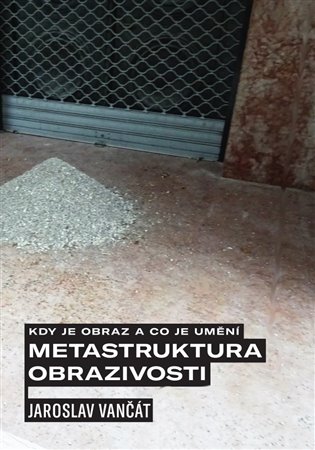Vážení zákazníci, děkujeme za vaše objednávky. Prosíme vás o trpělivost při jejich doručení, děláme vše pro to, abychom je doručili do Vánoc. Věnujte prosím pozornost datu odeslání, které je uvedeno u zboží. Děkujeme, tým TvFit.cz

| Vaše cena | 378,60 Kč |
| Vaše cena bez DPH | 378,60 Kč |
| Dostupnost | Skladem > 5 ks |
| Odesíláme v pátek 9.1. | |
Publikace se snaží nastolit "pragmatický" přístup k výtvarnému umění a tvorbě obrazů. Ty zde nejsou představovány primárně jako estetický objekt, jímž se jeví na úrovní osobního chápání, ale jsou s mnoha důkazy zkoumány jako významný a ničím jiným nezastupitelný sociální proces, nezbytný k vynalézání a testování nových obrazových znaků, potřebných pro zvládnutí nových sociálních kontextů.
Takto založený koncept obrazu, výtvarného umění, jeho teorie a dějin, včetně jeho pedagogiky, zde představuje tuto oblast jako ucelený systém s jistou funkcionalitou a směřováním, mnohdy v protikladu k mínění, že nic takového v umění hledat nelze, neboť nejcennější na něm je jeho nezaměřenost a jeho svoboda, usilování o nezávislost jeho existence a maximalizace jeho estetického účinku, které v kantovské tradici jakýkoli další účel vylučují. V tomto kontextu však už nestačí učit se pouze užívání (kritice) těchto vizuálních znaků jako takových, ale je třeba porozumět celému procesu, v němž znaky vznikají a jsou socializovány.
Při tomto zkoumání se postupně vyjevují některé souvislosti, vázané na rehabilitaci pojmu struktura v pojetí Jana Mukařovského - strukturní představa o vývoji umění a o jeho funkčním, pragmatickém začleňování do aktivního fungování society; představa o obraze, o zobrazení jako postupně se vyvíjející struktuře vizuálních znaků (což znamená také ovšem i navyšující se množství jejich vzájemných vztahů!), funkčně směřující skrze individuálně podmíněné jedinečné vnímání a poznávání k sociální kooperaci a koordinaci. Klíčová slova: výtvarné umění, obraz, struktura, interaktivita, sociální kooperace a koordinace
The publication aims to introduce a "pragmatic” approach to visual arts and the creation of images. It presents images not primarily as aesthetic objects, which they seem to be through subjective perception; instead, it uses a body of evidence to examine images as a significant social process that cannot be substituted by anything else and that is essential for the inventing and testing of new visual signs required to deal with new social contexts.
This concept of image, visual art and its theory, history and pedagogy is used here to represent the entire area as a coherent system with a certain functionality and orientation; in some parts this concept contradicts the opinion that nothing of that sort can be sought in art because the most valuable aspect of art is its absence of focus, its freedom and striving for an independent existence and for a maximisation of its aesthetic effect, which, in line with the Kantian tradition, rules out any other purpose. In this context, however, it is no longer enough only to learn how to use (or criticise) these visual signs as such; it is necessary to understand the entire process in which these signs are created and socialized.
This examination process gradually reveals certain connections related to the restoration of the term "structure” as it was understood by Jan Mukařovský: a structural idea of the development of art and its functional, pragmatic integration into the active functioning of the society; an idea of image, or depiction, as a gradually evolving structure of visual signs (which also implies, of course, an increasing amount of their mutual relations!), functionally striving, through individually conditioned unique perception and cognition, for social cooperation and coordination. Keywords: visual art, image, structure, interaction, social cooperation and coordination
Autor: Jaroslav Vančát